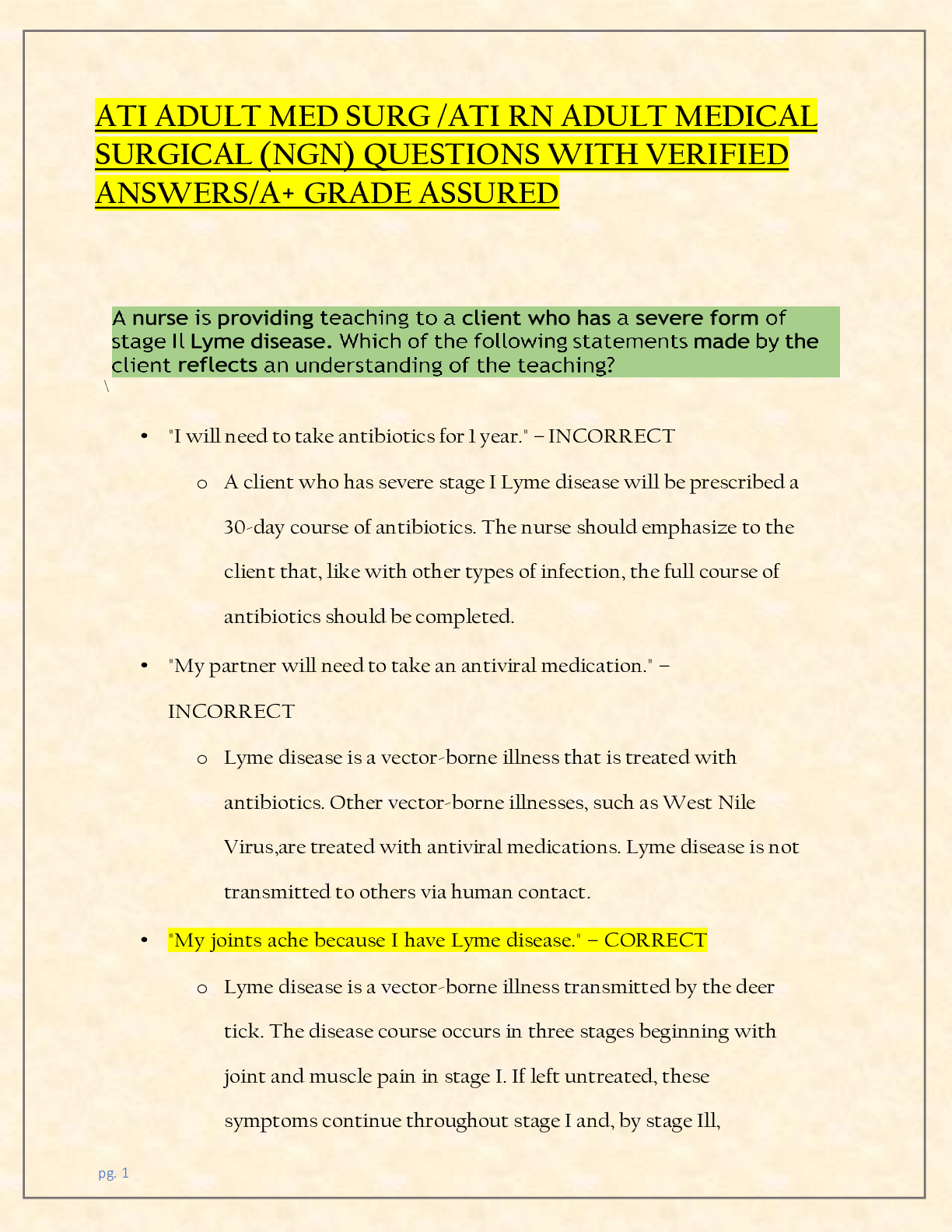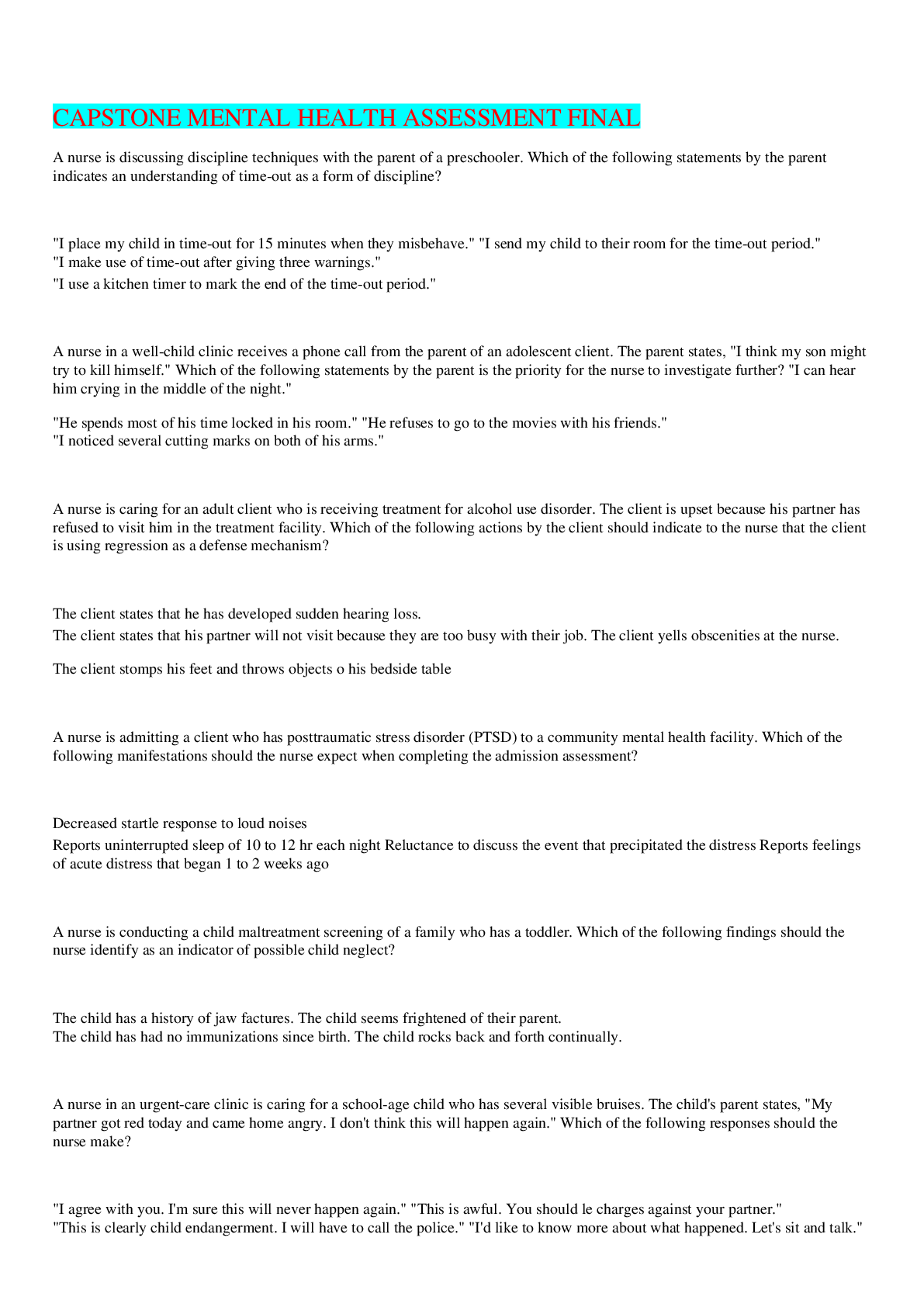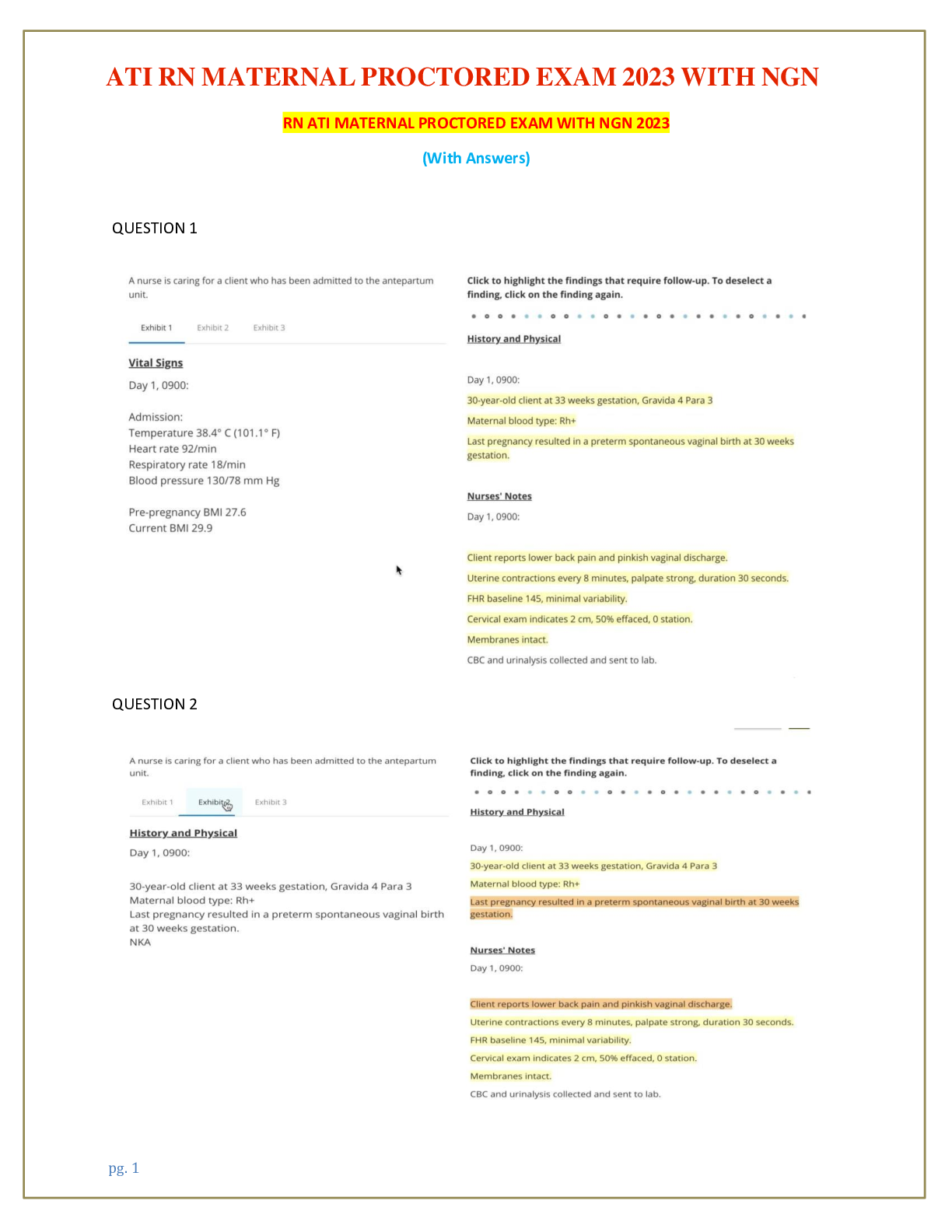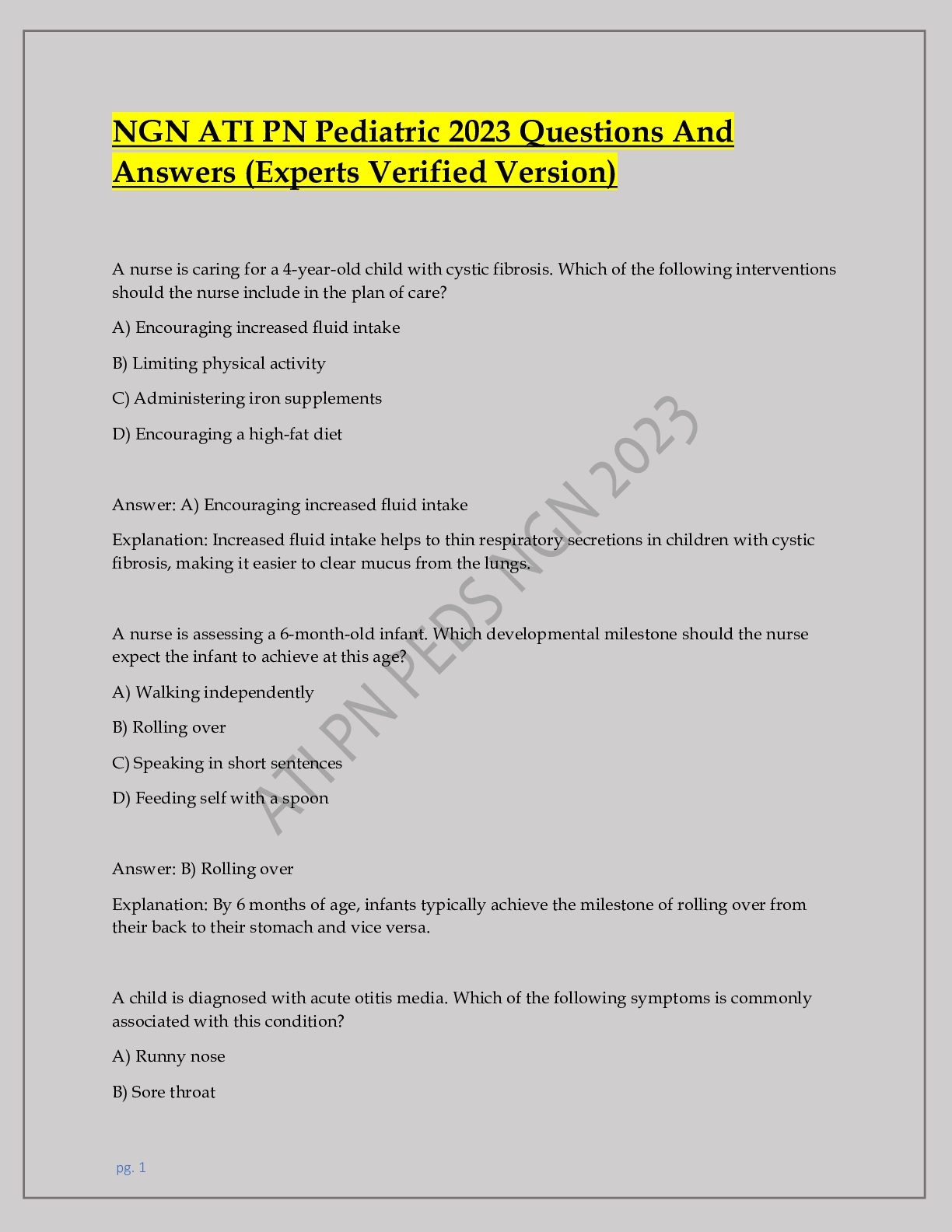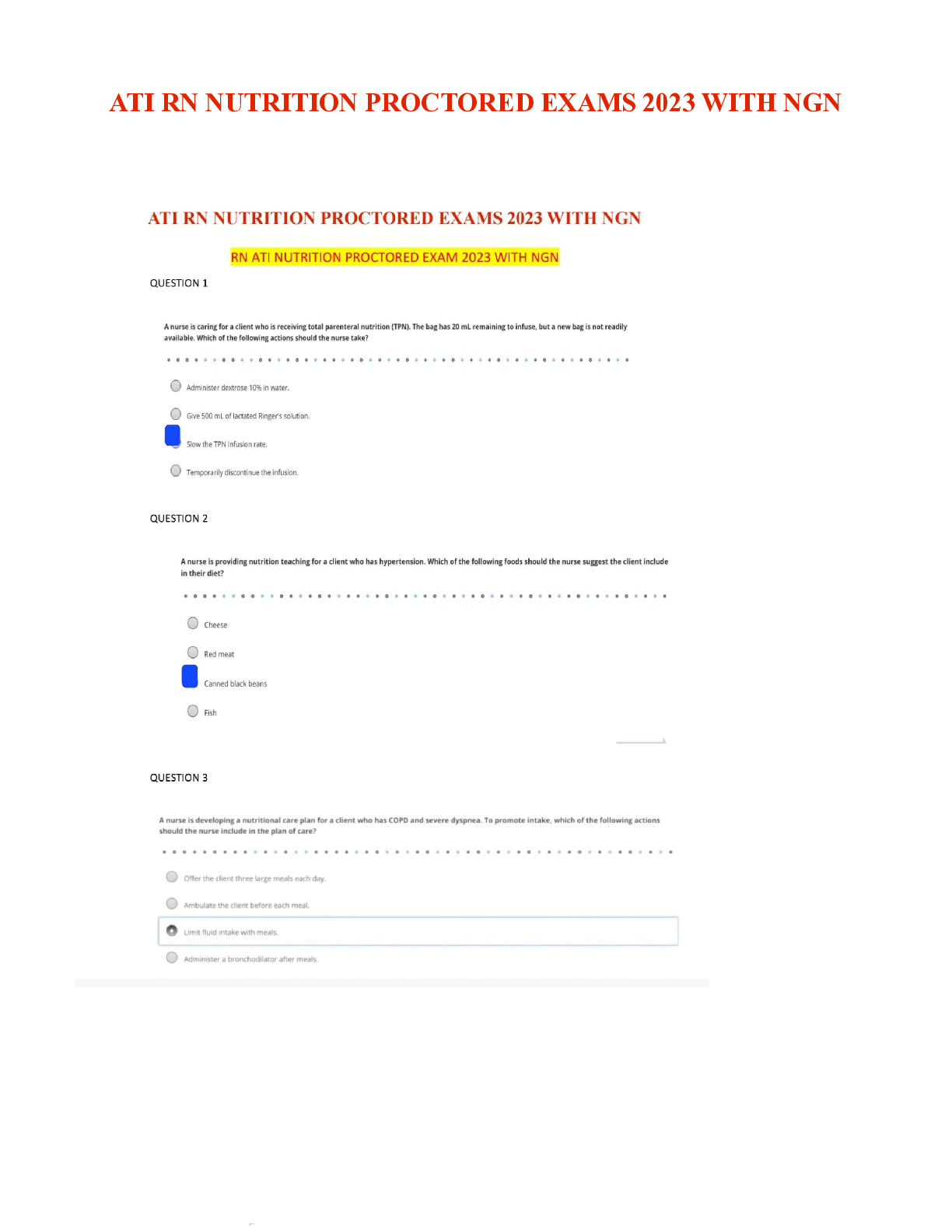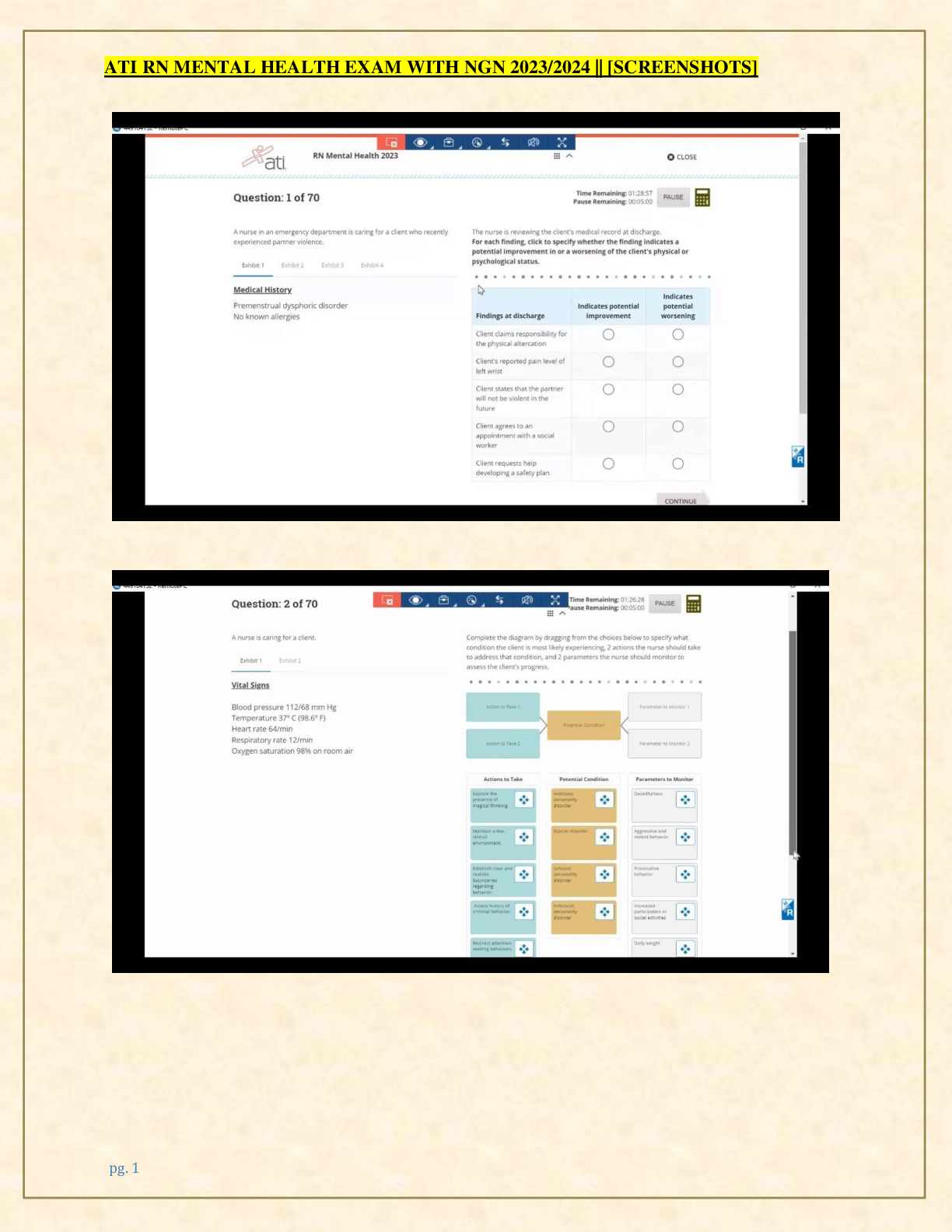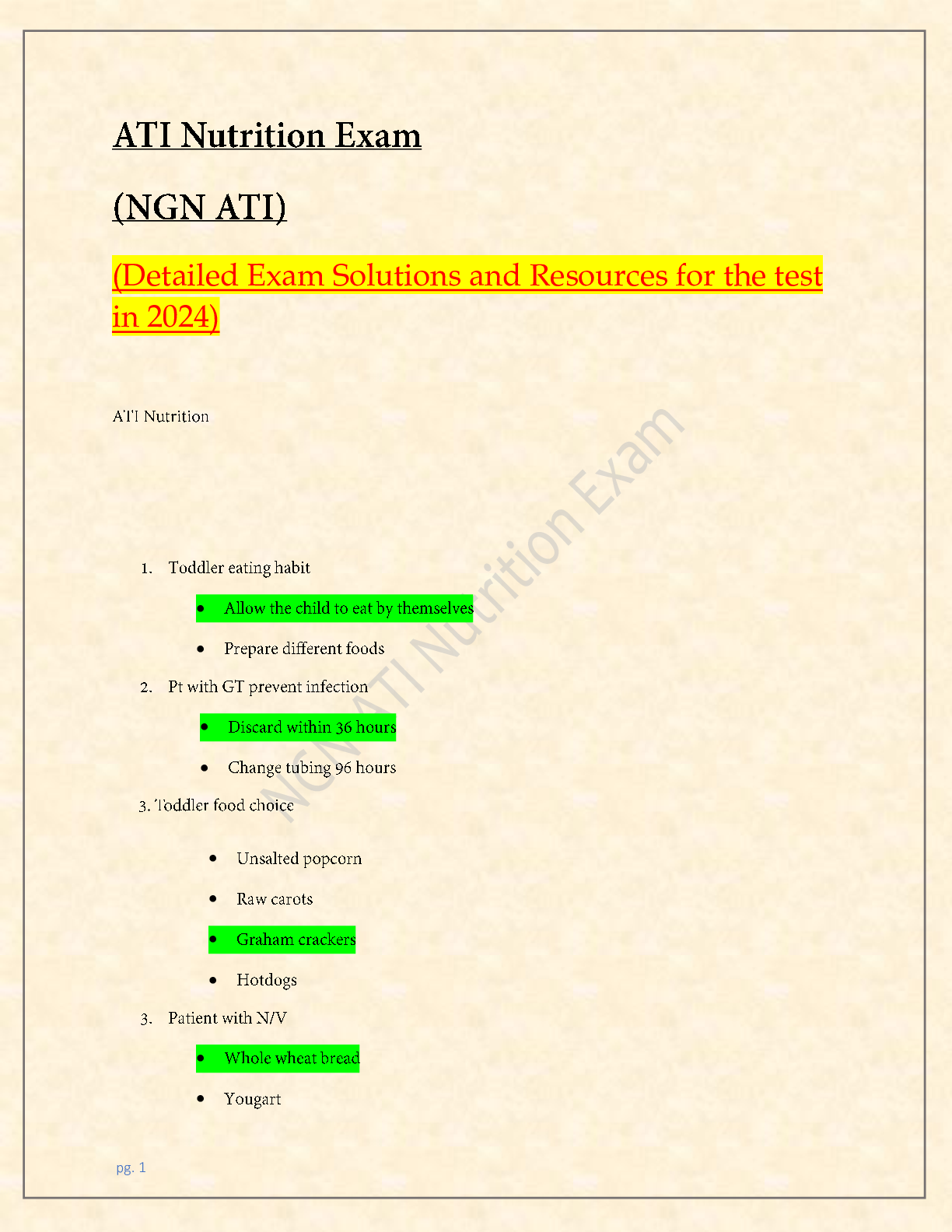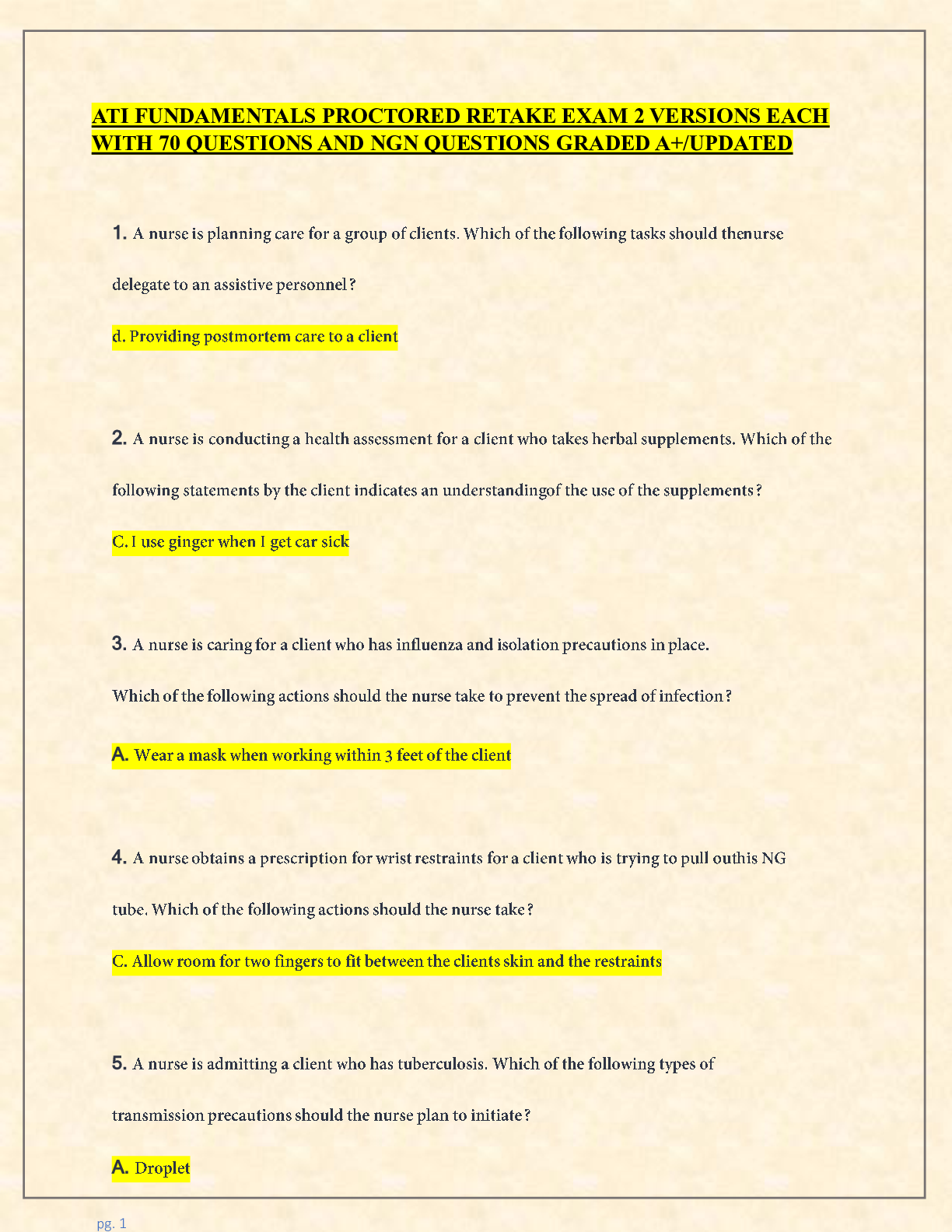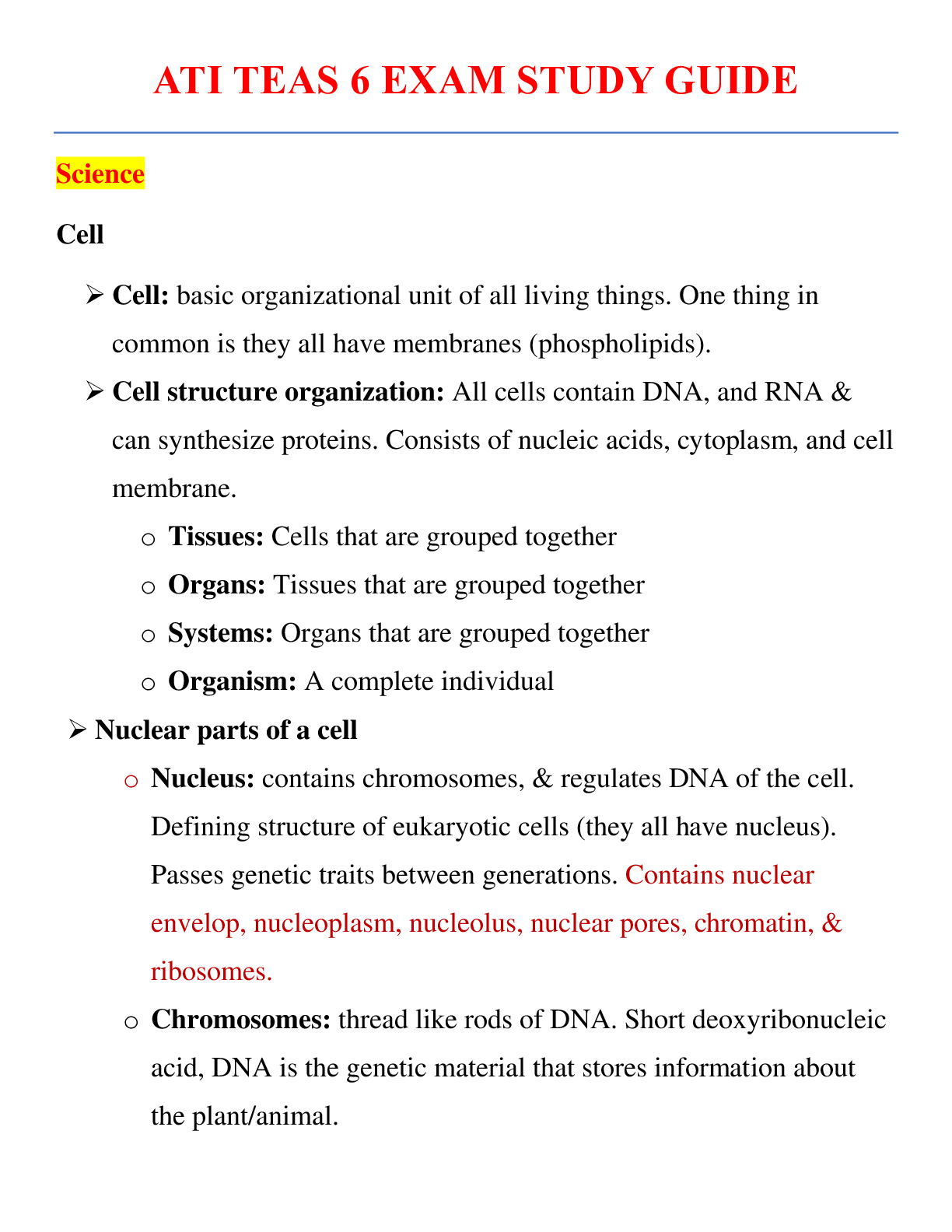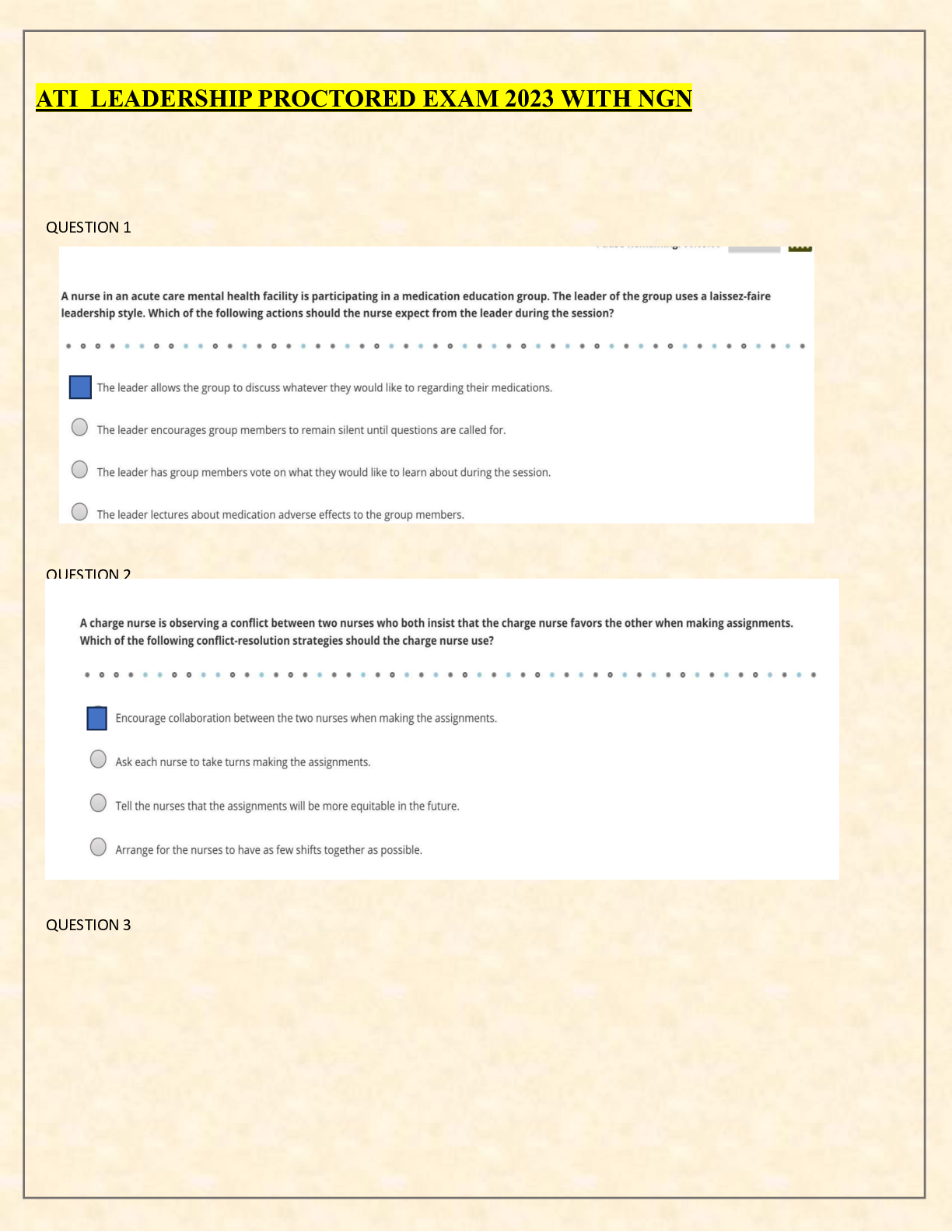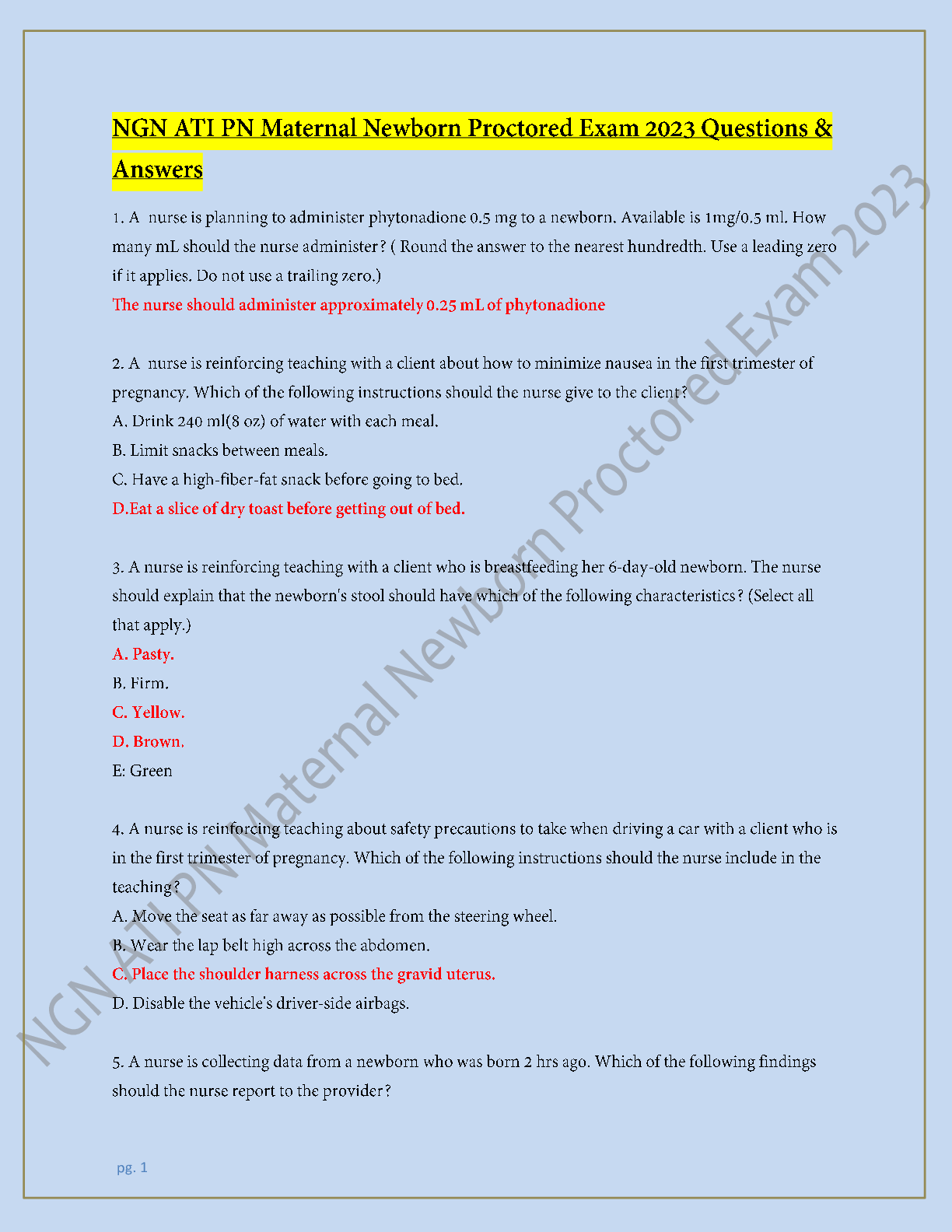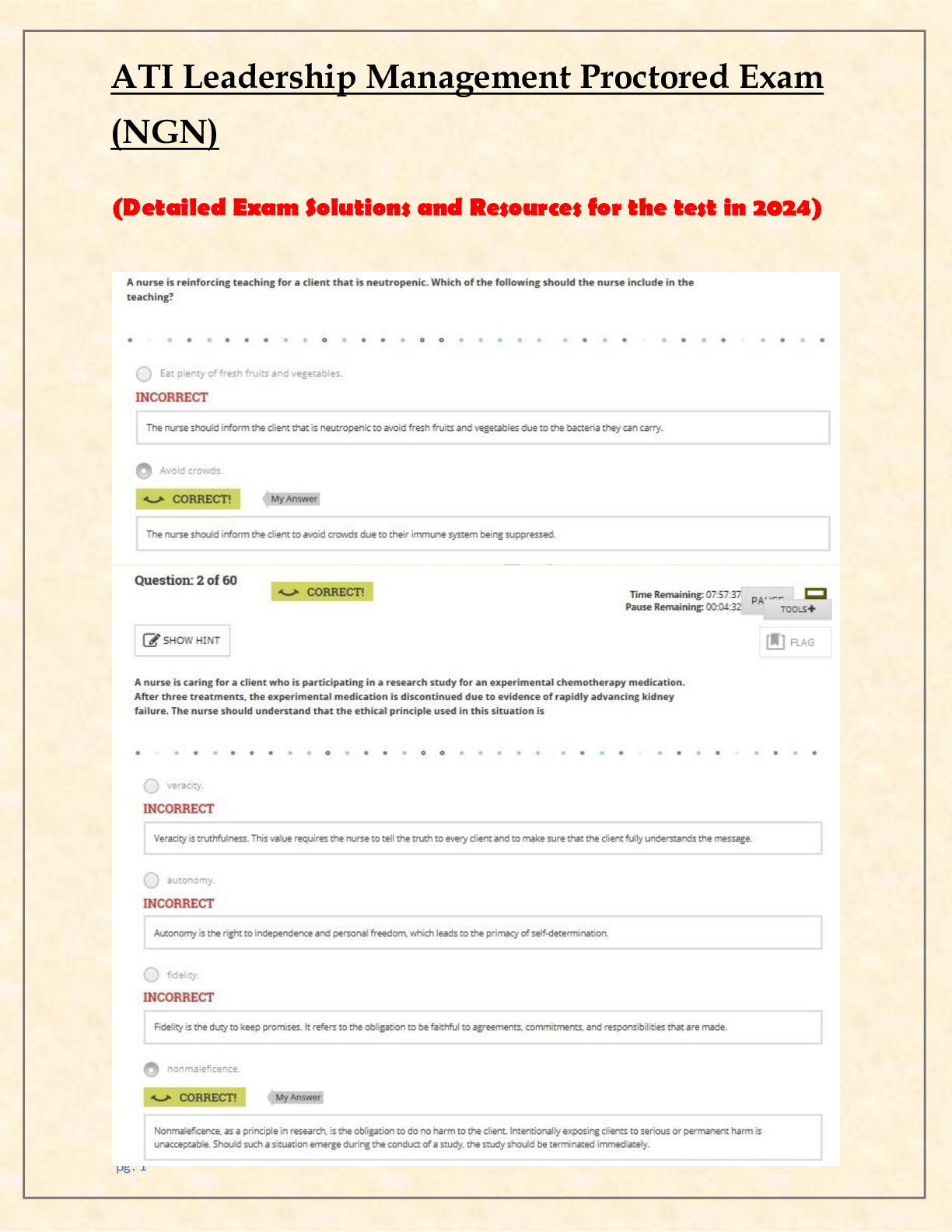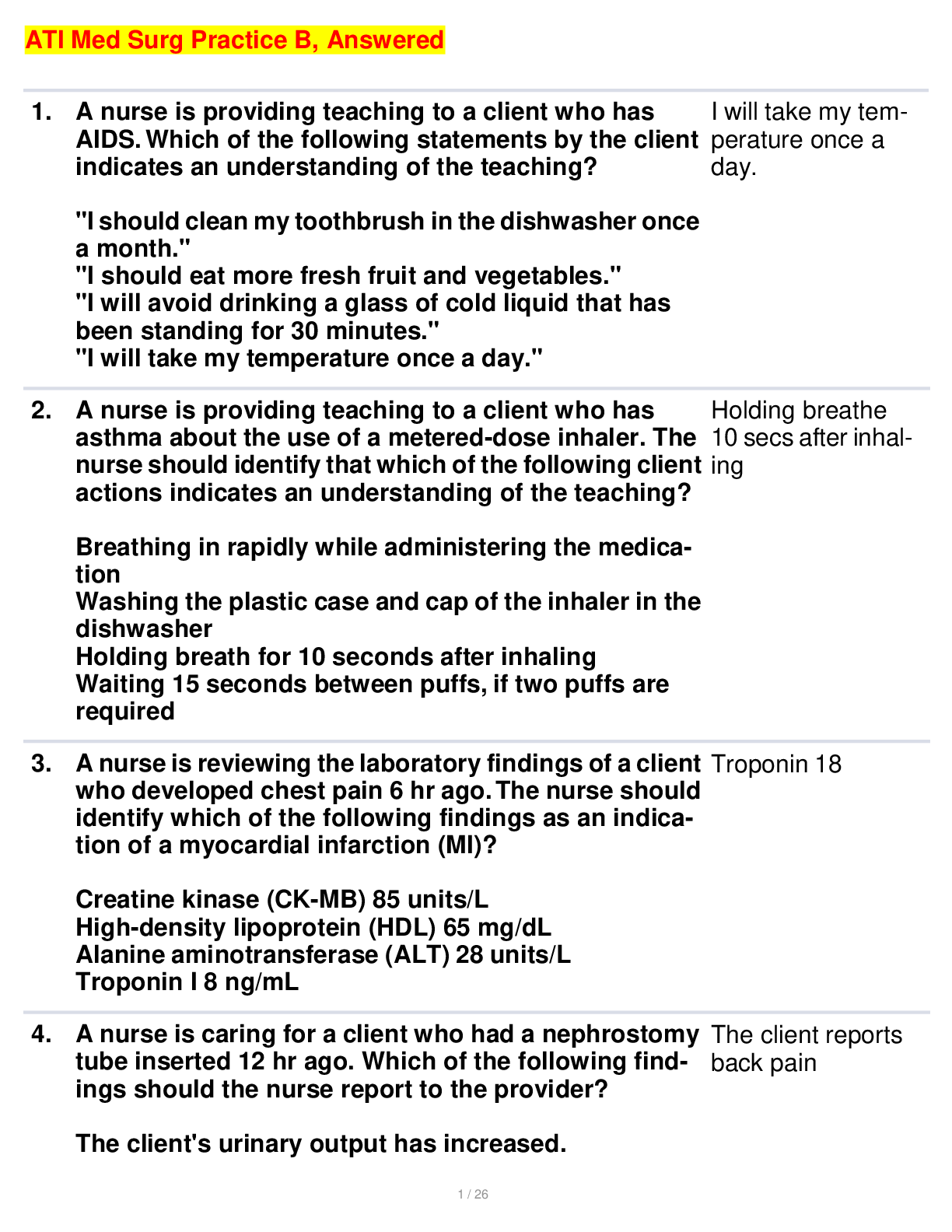ATI fundamentals Vital Signs 2022 Test(Answered)
Document Content and Description Below
Having recently moved into the area, a 56-year-old female is having her initial visit with the primary care provider she selected. The patient denies any chronic or acute illnesses. You measure & r... ecord her vital sign data, whats next? The primary reason for assessing this patient's vital signs is to: establish a baseline when the patient reports no specific health-related problem. You got it right.Vital signs are assessed for various reasons that include determining the patient's response to medical and nursing therapy as well as identifying clinical problems. However, the primary reason for such assessment at an initial visit of an apparently well patient is to document baseline data. This information will be useful for comparison with vital-sign data obtained at subsequent visits. 2. Which of the following accurately describes body temperature?: The difference between heat produced by and lost from the body rationale: Normal body temperature is the healthy balance between the amounts of heat the body produces as a byproduct of metabolism, muscle activity, thyroxine output, and sympathetic stimulation and the heat lost as a result of radiation, conduction, convection, and evaporation. 3. Which of the following temperatures is within the normal range for adults and is documented correctly? A. T = 98.6º F B.T = 99.6º F (O) C.T = 101.0º F (O): B. T = 99.6º F (O) 4. Which of the following is true regarding assessing a patient's pulse? A.The human pulse is the palpable bounding of the blood flow in a peripheral artery. B. The normal pulse range for a resting adult is 50 to 110 beats/mi C.Three components that the nurse should include when documenting pulse (P) are the rate, rhythm, and depth. D.To calculate the pulse of a patient whose rhythm is irregular, the nurse should count the pulse rate for 30 seconds and multiply by two.: A.The human pulse is the palpable bounding of the blood flow in a peripheral artery. 5. Will your assessment of respiration provide information about your patient's ability to intake carbon dioxide and to expel oxygen?: B. No [Show More]
Last updated: 1 year ago
Preview 1 out of 10 pages
Instant download
.png)
Instant download
Reviews( 0 )
Document information
Connected school, study & course
About the document
Uploaded On
Oct 22, 2022
Number of pages
10
Written in
Additional information
This document has been written for:
Uploaded
Oct 22, 2022
Downloads
0
Views
220

.png)






